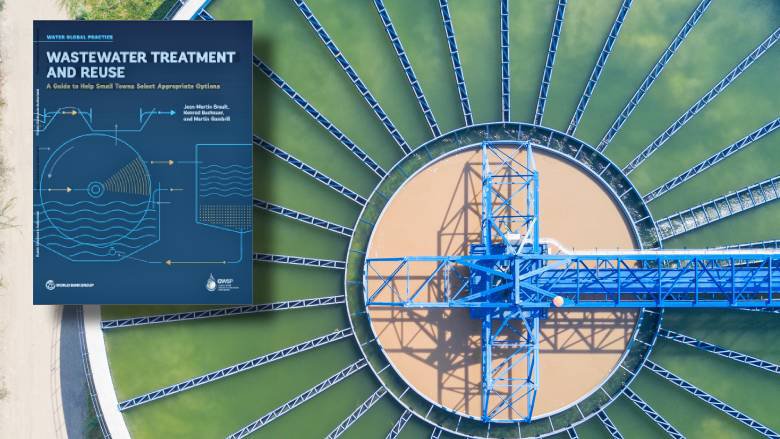Vital Steps in Community Waste Water Treatment Plants
Strategic Approaches to Enhance Waste Water Therapy Performance and Decrease Environmental Impact
In the realm of waste water therapy, the quest for improved performance and decreased environmental effect is a perpetual challenge that requires tactical options. As culture comes to grips with the imperative to manage water resources sustainably, a nuanced technique becomes important. The assimilation of innovative treatment technologies, energy-efficient processes, resource recovery approaches, enhanced nutrient elimination strategies, and wise monitoring and control systems stands for a complex framework for attending to these pushing concerns. However, what lies at the core of this complicated web of strategies is the prospective to transform the method we come close to drainage treatment, not just as a process of disposal, however as a beneficial possibility for technology and ecological stewardship.
Advanced Therapy Technologies
Sophisticated membrane filtering systems have transformed innovative wastewater treatment processes, significantly boosting the elimination of pollutants. This modern technology has actually proven to be extremely effective in removing a large variety of impurities, consisting of drugs, heavy metals, and organic substances, which are often challenging to eliminate via conventional treatment methods.
In addition, membrane filtration systems offer various benefits over traditional treatment approaches. They require much less room, create higher-quality effluent, and are a lot more resistant to changes in influent water high quality. In addition, these systems are highly versatile and can be conveniently integrated right into existing therapy plants or made use of as standalone devices for decentralized applications. As the demand for clean water continues to increase, the adoption of innovative membrane layer purification innovations is important to ensure efficient and lasting wastewater therapy methods.
Energy-Efficient Processes
The integration of energy-efficient processes in wastewater therapy systems is essential for enhancing source usage and decreasing functional costs. One crucial approach to boosting power effectiveness in wastewater therapy is the use of innovative oygenation systems, such as fine bubble diffusers or surface area aerators, which can boost oxygen transfer performance and decrease power intake.
Furthermore, maximizing procedure control and automation through the usage of sophisticated sensing units and checking systems can improve overall energy performance by adjusting operations in real-time based on actual need and conditions. Carrying out energy audits and consistently checking energy performance indicators are crucial methods to determine areas for improvement and track energy-saving initiatives efficiently. In general, the adoption of energy-efficient processes in wastewater treatment not just benefits the setting but likewise adds to lasting expense financial savings and functional sustainability.
Resource Healing Approaches
With a focus on enhancing resource application and sustainability in wastewater treatment systems, the application of source healing approaches becomes a critical aspect in enhancing operational efficiency. Source recovery techniques in wastewater therapy entail the identification and extraction of important sources from the waste stream, consequently turning what was once considered waste right into a valuable property. By executing resource recuperation techniques such as nutrient removal and recuperation, energy generation from raw material, and the production of recyclable water, wastewater treatment plants can reduce environmental impact while making best use of efficiency.

Boosted Nutrient Removal Techniques
Implementing advanced nutrient removal strategies is vital for enhancing the efficiency of wastewater treatment systems. One of the vital strategies used for boosted nutrient removal is the procedure of organic nutrient elimination (BNR), which involves the removal of nitrogen and phosphorus via biological processes.

In enhancement to BNR, advanced therapy techniques such as membrane layer bioreactors (MBRs) and built marshes can also be employed to improve nutrient elimination effectiveness. MBRs make use of membrane layers to accomplish premium effluent criteria by effectively removing nutrients and suspended solids. Built marshes imitate natural marsh procedures to remove nutrients through plant uptake, microbial task, and sedimentation. By incorporating these sophisticated nutrient removal methods into wastewater therapy systems, towns and industries can efficiently decrease nutrient air pollution and secure the atmosphere.
Smart Monitoring and Control Solution
Making use of innovative innovation, the integration of clever tracking and control systems transforms the functional effectiveness of wastewater treatment centers. These systems incorporate sophisticated sensing units and data analytics to constantly monitor essential specifications such as pH degrees, turbidity, liquified oxygen, and flow prices in real-time. By gathering and assessing this information, drivers can gain useful understandings into the performance of the treatment processes, enabling positive adjustments to maximize treatment effectiveness.
Smart tracking and control systems additionally support remote monitoring capacities, enabling drivers to access real-time data and control features from off-site areas. This remote access boosts operational adaptability and responsiveness, enabling quick treatments in case of system breakdowns or fluctuations in influent high quality. Moreover, the anticipating maintenance capacities of these systems aid avoid tools failures and decrease downtime, ultimately visit this site improving the general reliability of wastewater therapy procedures (Waste Water Treatment).
Verdict
In final thought, strategic strategies such as advanced therapy technologies, energy-efficient procedures, resource recuperation techniques, boosted nutrient elimination strategies, and wise surveillance and control systems play an essential duty in improving wastewater therapy performance and decreasing ecological effect. By executing these strategies, wastewater treatment plants can enhance their overall efficiency, decrease energy usage, recoup beneficial resources, and guarantee conformity with ecological regulations. These strategies are important for reliable and lasting wastewater management practices.

In conclusion, strategic approaches such as innovative treatment innovations, energy-efficient processes, source recovery methods, enhanced nutrient removal strategies, Read Full Report and smart surveillance and control systems play a vital duty in enhancing wastewater therapy performance and reducing ecological influence.